Menu
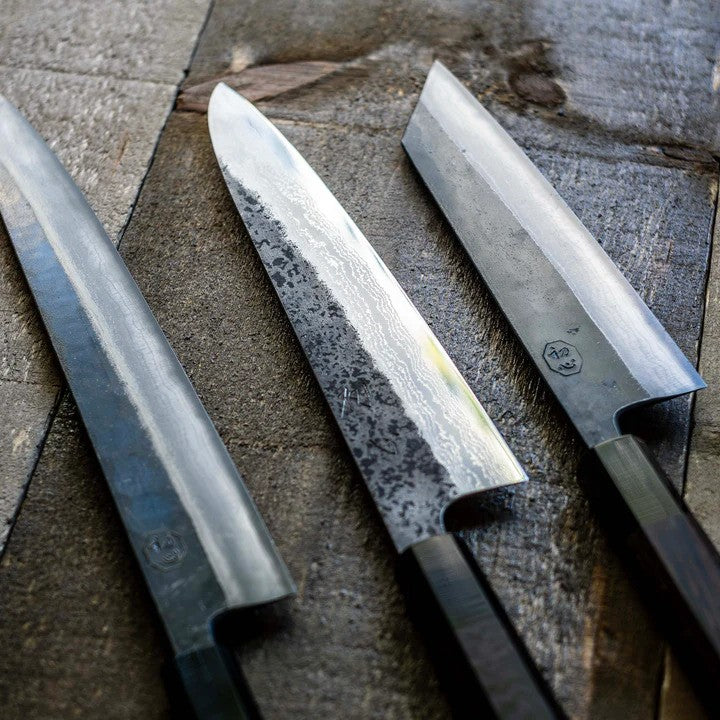
THE BLACKSMITH
HATSUKOKORO
- Choosing a selection results in a full page refresh.


















Usually ready in 1 hour
| Blade Length | 150 mm |
| Total Length | 275 mm |
| Steel | VG-10 Stainless |
| Handle | Maple |
| Ferrule | Red Maple |
| Rockwell | 62-63 |
| Height Spine to heel | 29 mm |
| Width at Spine | 2.04 mm |
| Weight | 72 g |
| Bevel | Double (50/50) |
The petty is the Japanese equivalent of the western style paring knife. They're usually a little longer and I could never go back after using one. The idea is all the on board work is done with your gyuto or chef knife and everything in hand is done wit the petty. Not limited to capping strawberries, peeling, turning, or coring veggies, and smaller butchery tasks like chicken, small fish, or deboning a pork shoulder.
Follow these care recommendations for your Japanese knives to protect the edge and keep them sharp as long as possible:
All products are shipped within 24 hours. We offer same day shipping for products ordered by 12pm. Please allow 4-7 business days for your shipment to arrive with standard shipping. Expedited shipping options are also available at checkout.
We offer free shipping on orders within Canada over $150 CAD and free shipping on orders to the US over $200 USD.
Curbside pick-up is available at both our Hamilton and Etobicoke locations.
To make sure our customers are always satisfied, we offer full refunds on products for 14 days after receiving them. See our full return policy for details.
More questions? Check out our shipping policy, our return policy, or reach out to us directly.
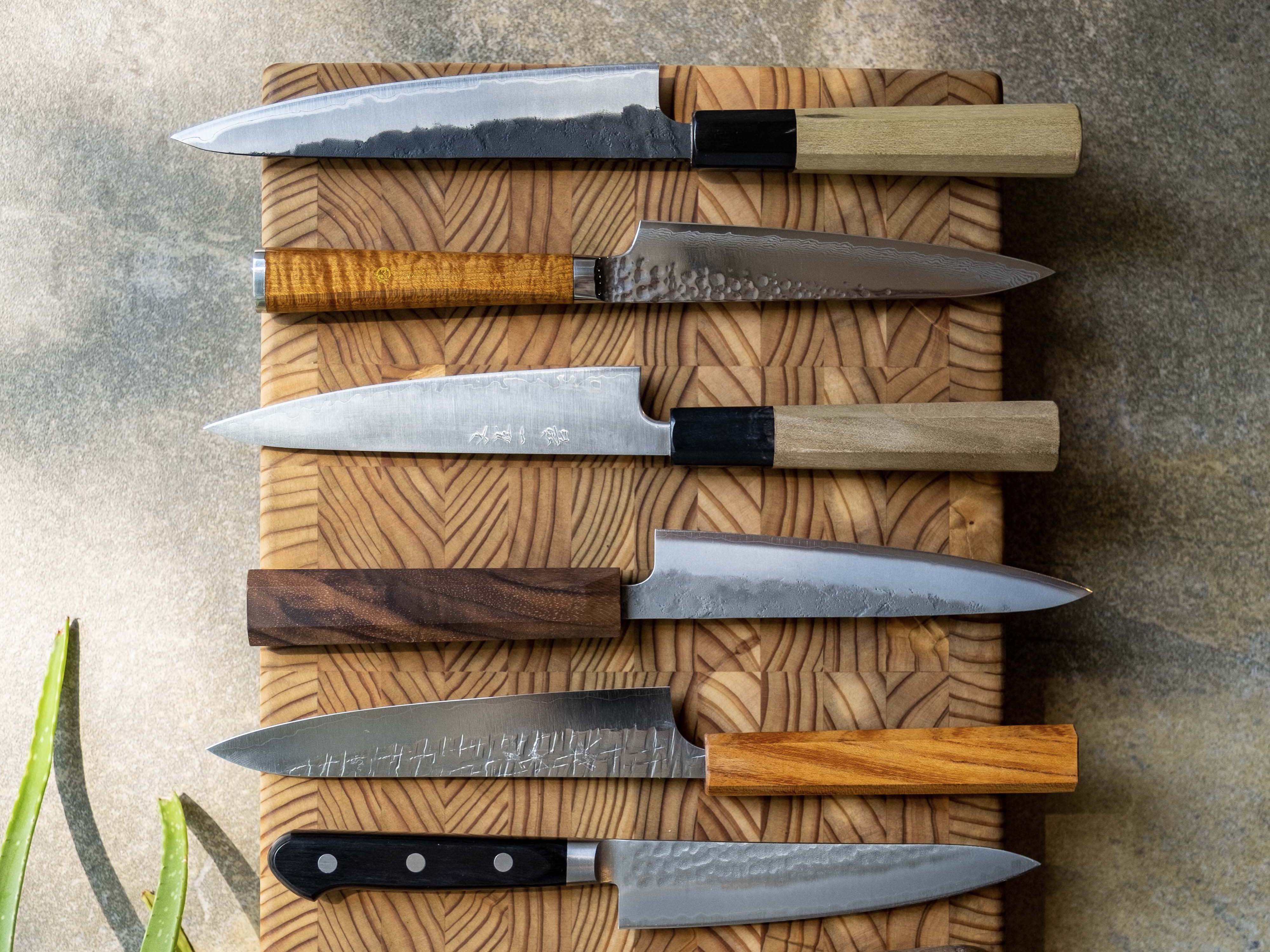
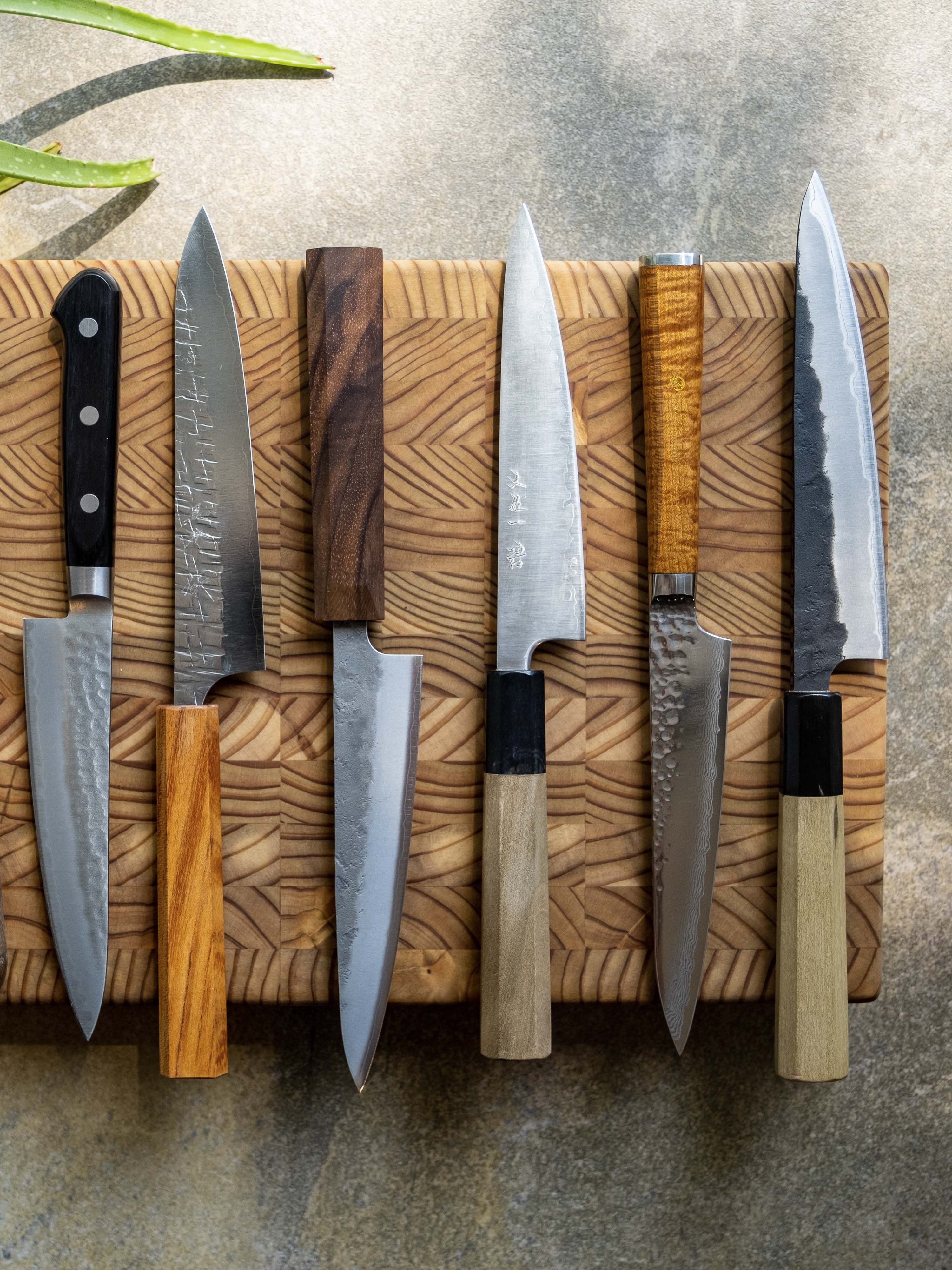
The petty knife is the Japanese equivalent of a utility knife. They typically range in size from 90 mm (3.5 inches) to 150 mm (6 inches) and have a slender, easy-to-control, short blade. They are a perfect accompaniment to a Gyuto, Santoku, or Bunka, as they facilitate smaller tasks. Shorter versions are great for in-hand use. Longer versions are great for fine chopping and managing small ingredients on a cutting board. They also handle butchery tasks with ease.
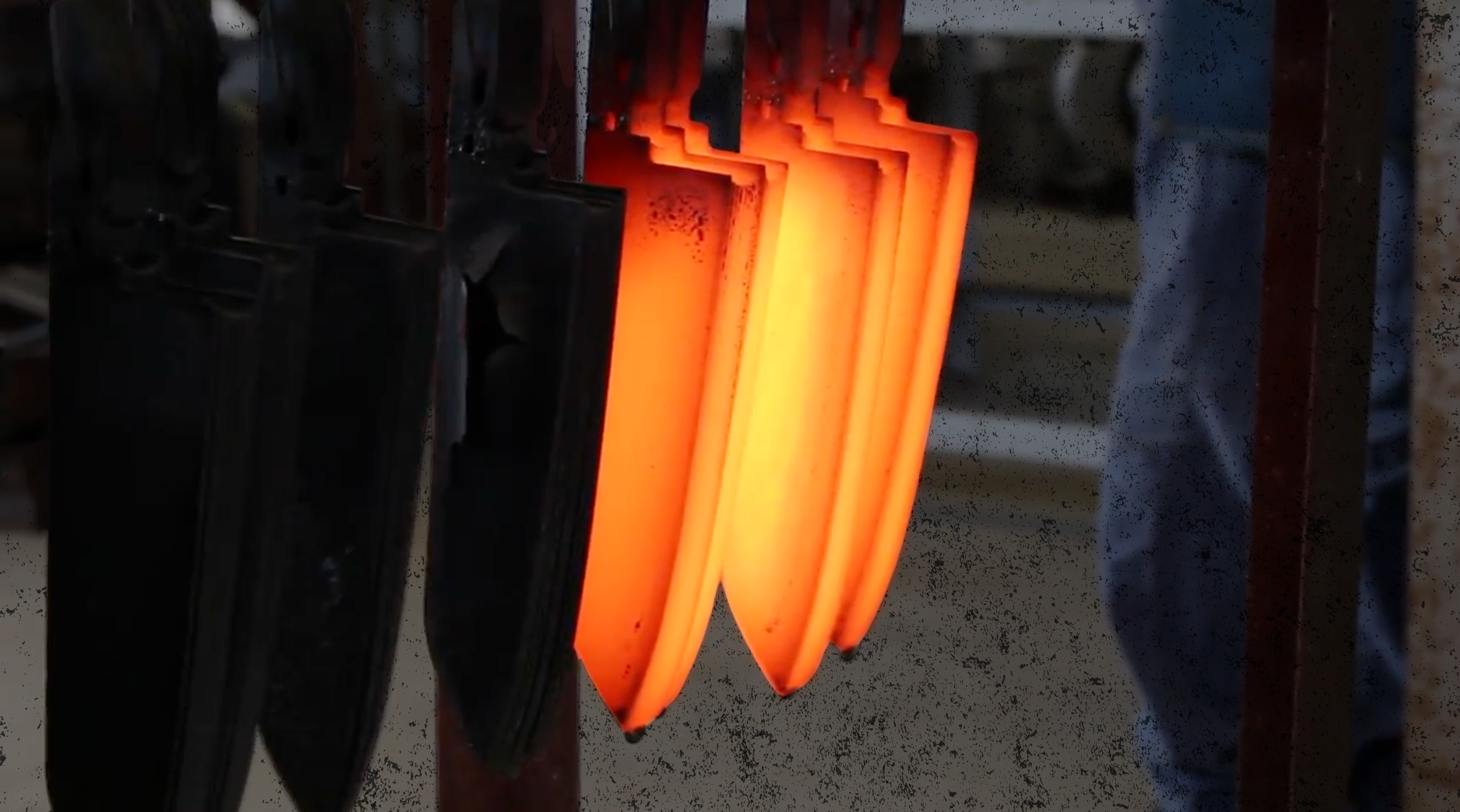
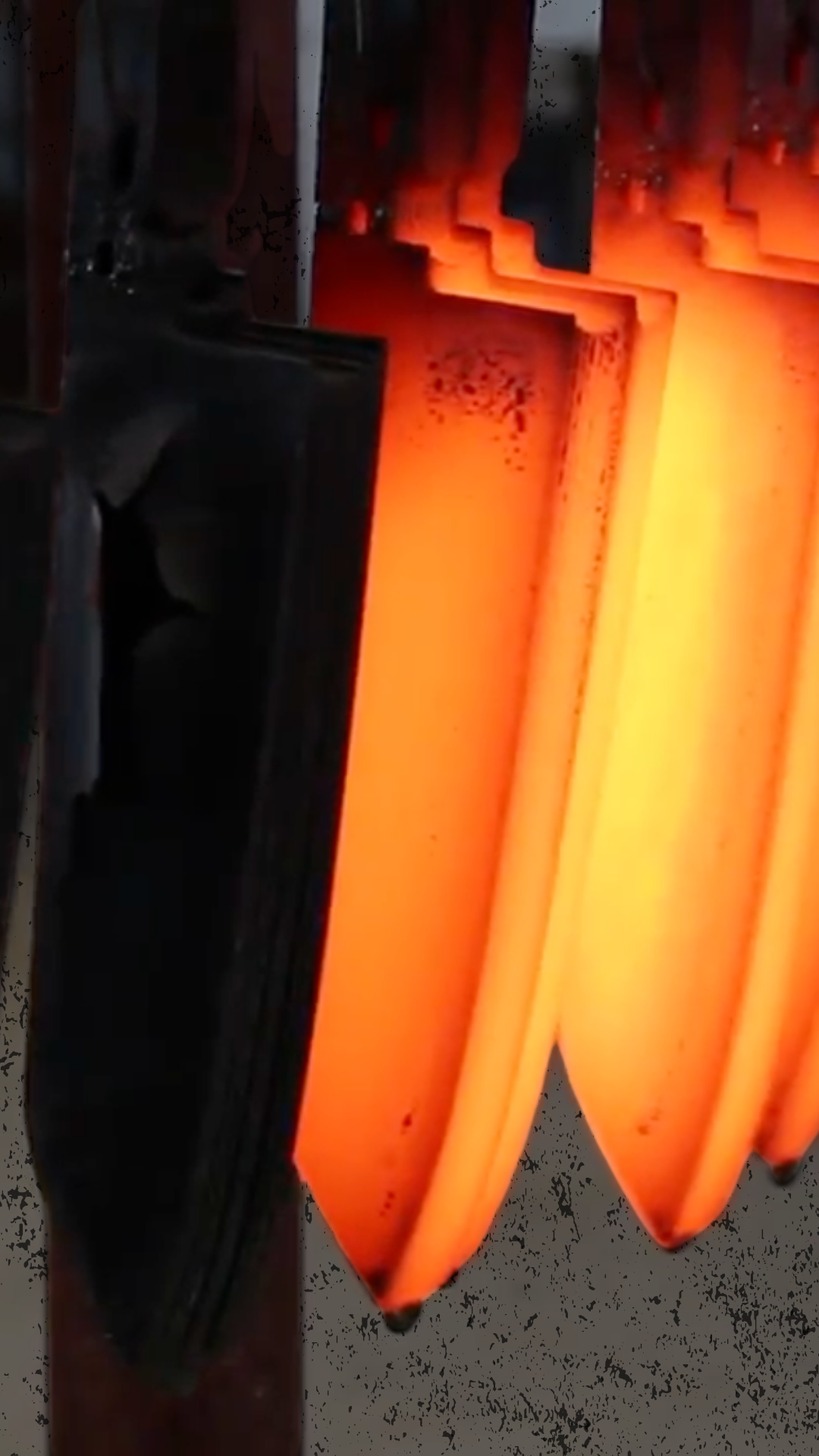
Likely the most widely used Japanese stainless steel, it provides great rust resistance, very good edge retention, and is relatively easy to sharpen. Because of how many companies use this steel to produce their knives, it can sometimes get a bad rep, but we have had nothing but positive experiences using and sharpening it. Knives made from this steel are generally a bit more affordable compared to those made from steels like R2 and ZDP189 while still offering fantastic performance and easy maintenance.
Chemical Composition:
C 0.95-1.05% | Cr 14.5-15.5% | Mo 0.9-1.2% | V 0.1-0.3% | Co 1.3-1.5%
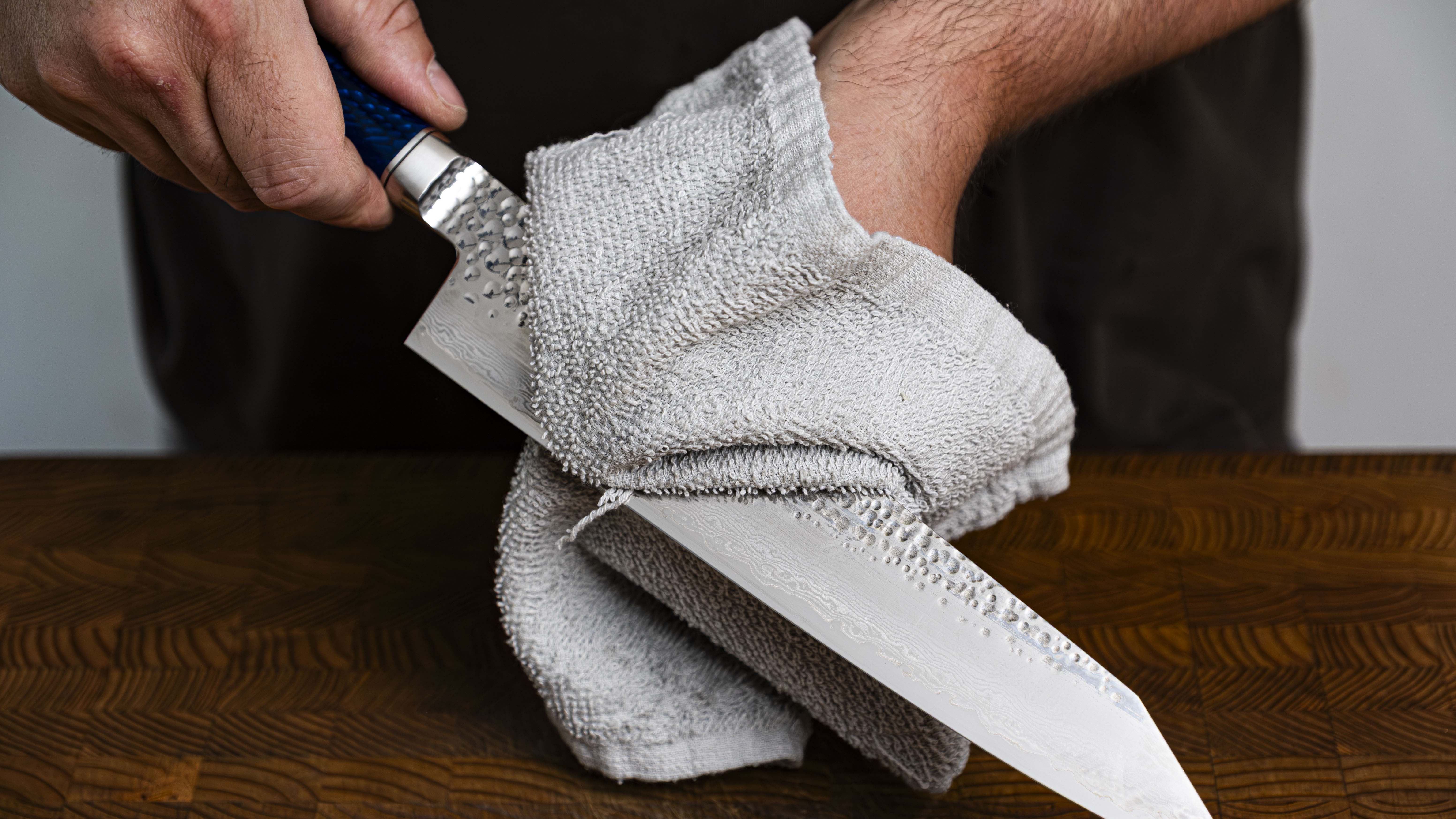
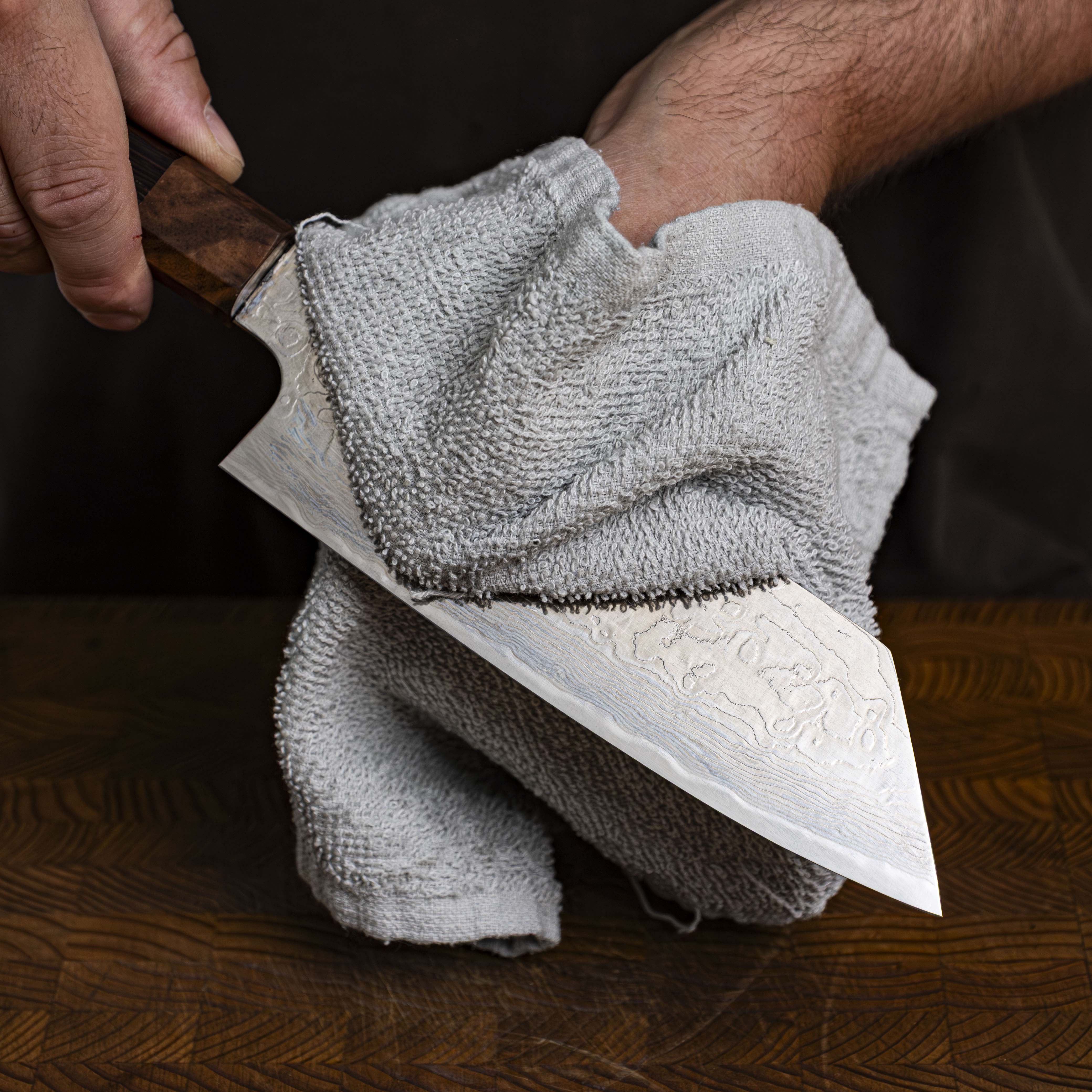
LOW MAINTENANCE
Stainless steel Japanese knives are made in a process called “Sanmai” or “Forge welding” where two softer layers of stainless steel are laminated around a harder core layer of stainless steel. All three of these layers are rust resistant and therefore are not susceptible to rust or discoloration. The softer outer layers of steel are used to make the knife more durable and flexible while the harder core layer is used to provide better edge retention to the blade.

Hatsukokoro are masters of smithing, sharpening, and handle making. They ensure quality and a high attention to detail on their knives, so you know that you will be getting an amazing work knife. Based out of the industrial city of Amagasaki, Hyogo Prefecture, Japan, Hatsukokoro offers a wide breadth of handcrafted blades, sourcing from a variety of knife making regions across Japan. Their offerings are diverse in price point and profile, making them a great option for both industry professionals and home cooks.
